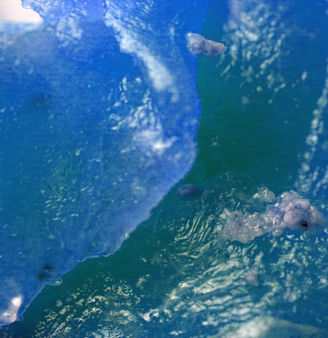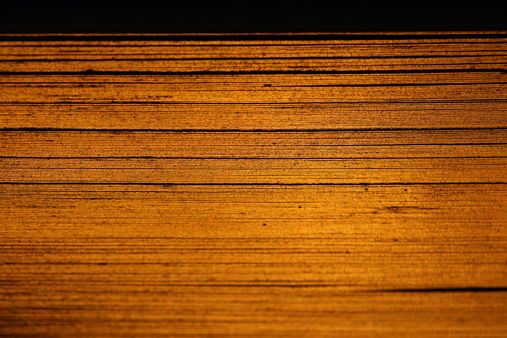
ED WALL
'Valley Section' Gueddes
Starting with Gedde's 'Valley Section', we see a cross-section-styled drawing, that allocates industries to certain areas of the landscape. Instantly, we map a worker to an area, however, this application-based localization is temporal. We can think of the landscape as a living being. A sleeping giant, rolling and turning on its bed, creating hills, divots, and plains. Peppered with the corrosive bites of the human insect.
The temporality of landscape has often gone unseen through the lifespan of a human being. Small increments, regression, and periods of stagnation that occur on a timescale much larger than our own - that we have not been able to accurately measure for the majority of our existence (reminiscent of Roald Dahl's 'The Twits', where Mr. Twit slowly extends Mrs. Twit's cane to convince her she was shrinking). Our lacking of 'big-picture' thoughts, leads to troubling later generations with issues of the past.
Temporality is also short-term - outside of the 'big-picture' perspective. As the Earth turns and moves around the Sun (as it has done for 4.5 billion years), it produces 4 seasons. These quarterly fluctuations in the amount of heat and sunlight that Each side of the Earth is exposed to will, in turn, affect the amount of fauna and flora that mankind has depended on for thousands of years. The miner, the woodman, the hunter, the shepherd, the peasant, the gardener, and the fisher have learnt to adapt the environment in order to be needed all year round.
Gedde's diagram describes the people that become a part of the landscape. But what about those that come out? Have we, the majority, transcended the need for landscape? What does the landscape mean to an artist? How do we define the landscape? It is everything and everywhere. Everything within your field of view is part of the landscape. The landscape is always local.
My interest in landscape is an offshoot of my interest in soundscapes. Personally, soundscapes are about creating a purposeful space. Whether it is a space to relax in or a space that embodies tension and fear. They are emotional spaces. The created soundscape is a phantasm of reality. Like films, music, poems - I often find them to be supernatural as opposed to natural.
In the same vein of supernatural is the cityscape. Humans have designed and constructed this newer landscape from the pieces that surround it. Almost whisked from thin air, we have created a new natural.
The city reflects the temporality of the landscape around it. Constantly moving parts, horizontal and
vertical expansions, malleable.
Deterio
rating.

Natural landscape by Franco Fontana
Landscape and the horizon are inherently interlinked. The horizon dictates the end of the landscape, due to the curvature of the Earth. Franco Fontana's rolling Italian plains can be seen as a response to Gedde's diagram, once the people have disintegrated themselves from the Valley Section ideology.
In Lindsey Shefford's depiction of the fields above the White Cliffs of Dover, we see the end of the landscape and the beginning of the seascape. Seeing the cliffs rise out of the sea, I forget that the landscape is a structure itself. As we, or the elements, redesign its aesthetics, it becomes sculpture. An impossibly large sculpture in many ways, unified with and by the same materials that are used in traditional sculpture.
While we are currently bound to this finite physical space, it would be irresponsible to ignore the landscapes of the beings around us. Evoking empathy towards the creatures that also inhabit the same finite space.

Horses on the cliffs by Lindsey Shefford
MICRO LANDSCAPES
"The basic theory and technique of the landscape way of seeing was linear perspective, as important for the history of the graphic image as printing was for that of the written word." - Denis Cosgrove
Where cityscapes and landscape are mentioned, I think it is safe to say that most of us imagine them with a common scale. Big open spaces, large buildings. The landscape is perceived as big because we have relatively good eyes compared to some other animals. An idea that has piqued my interest, one that I have sketched above, is that of micro-landscapes. The world of the small. By editing macros photos of bread, books, salmon and other objects, I have been able to create tiny new landscapes.
If we assume the perspective of an ant, we imagine our field of view to decrease. The increased groß-ness of the landscape is to blame among other physiological difficulties. I am happy to depict the world in proportion to an insect, however without research into how and what an insect sees, this could become problematic in terms of ethical description.
Dragonfly seeing the world in 200fps
Different types of vision
Bees seeing the world in UV light
Turns out they see a pixelated world through their compound eyes. Faster movement detection, and different light detection mechanisms to humans.
Due to the impossibility of being able to look through the different lenses of a bee or other aphid with high levels of accuracy, I think it's best to leave the interpretation to the imagination (albeit with an acceptable degree of accuracy).
As an initial experiment, I downloaded a midi file of Rachmaninoff and Rimsky's 'Flight of the Bumblebee' and sampled the sound of a bee to see if the sound and the music had any explicit similarity. I had to transpose some of the lower and high sounds due to the extreme contrast in pitch throughout the piece, and I added 3ms of 'glide' as an attempt to simulate movement and the doppler effect. So when the bee sounds are high pitched, it is perceived as closer than when they are in a lower pitch. Using glide just enhances the percieved fluidity of the sampled sound.

Apart from pitch effects, I made sure to randomize the starting point of the 15second sample so that it didn't always start at the same point. Important in order to capture the diversity of sound.
What really is this though? I feel as if this experiment builds on the interpretation of Rachmaninoff and Rimsky's imaginative sonification (pianofication? musification?) of the movements of the bee. It grounds their idea into a semi-believable soundscape that captures an imagined world and transposes it with a possible reality.
Transposing the human eye to that of an imagined insect, with its compound eyes, is the next step.
STRAWBERRIES
So, the previous experiment with the Rachmaninoff and Rimsky's composition was a bit of a laugh. For this piece, I used a lens attachment that has a kaleidoscopic effect. Well, it's not really a lens attachment, it's a wooden toy for children. But I held it up to the lens, so it is now a lens attachment. After researching the compound eyes of an insect and finding out that they have a pixelating effect, I concluded that this was fair game.
The film itself is circular from origin. I duplicated the video 4x, rotated each duplication by 90°, and halved the opacity of each iteration. If trying to accurately reconstruct the vision of an insect, then I have failed miserably. I feel that with the breadth of different types of eyesight in the animal kingdom, there might be an animal that has a similar oculus.











